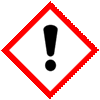CAS Number 126-96-5, Sodium DiacetateFCC Food Grade Manufacturers Exporters







CAS Number 126-96-5, Sodium Diacetate Manufacturer Exporter
For Properties Specifications of Sodium Diacetate Click Properties, Specifications of Sodium Diacetate Manufacturer.
For Uses of Sodium Diacetate Click Uses of Sodium Diacetate Manufacturer.
For For SDS MSDS Sheet of Sodium Diacetate Click SDS Safety Data Sheet MSDS Sheet of Sodium Diacetate Manufacturer.
The Properties and Specifications of Sodium Diacetate:
Sodium Diacetate FCC Food Grade:
Sodium Hydrogen Diacetate
CH3COONa-CH3COOH-xH2O
C4H7NaO4-xH2O Formula wt, anhydrous 142.09
NS: 262 CAS 126-96-5
DESCRIPTION
Sodium Diacetate occurs as a white, hygroscopic, crystalline solid. It is a molecular compound of sodium acetate and acetic acid. One gram is soluble in about 1 mL of water. The pH of a 1:10 aqueous solution is between 4.5 and 5.0.
Function: Sequestrant; preservative; antimicrobial agent; mold inhibitor.
REQUIREMENTS
Identification: A 1:10 aqueous solution gives positive tests for Acetate and for Sodium.
Assay: Not less than 39.0% and not more than 41.0% of free acetic acid (CH3COOH), and not less than 58.0% and not more than 60.0% of sodium acetate (CH3COONa), calculated on the anhydrous basis.
Lead: Not more than 2 mg/kg.
Readily Oxidizable Substances (as formic acid): Not more than 0.2%.
Water: Not more than 2.0%.
The Uses of Sodium Diacetate:
Sodium diacetate is a fungicide and bactericide registered to control molds and bacteria, and thus prevent spoilage, in stored grains. The pesticide is applied to hay as a dust or soluble concentrate (liquid spray) during the baling process. Sodium Diacetate can be used as seasoning and preservative in food such as in Bakery, Cereals, Snacks, Flavours, Ready Meals, Instant Food. Sodium diacetate is a sodium acid salt of acetic acid which is used in candy, meat products, oil, snacks, soups. It is found in baked goods, snack foods, fats and oils, meat products, candy, gravies and sauces, soups and soup mixes. Sodium Diacetate in food has E number E262, and it provides a solid source of acetic acid for use in dry products. It is a generally recognized as safe ingredient (GRAS) by the US FDA, and is also a generally permitted food additive in Europe and elsewhere. It is widely used by the meat packing industry as an excellent anti-microbial preservative. Vinegar taste on potato chips or tacos can be achieved by adding 0.1% sodium diacetate.
The MSDS-SDS Hazard Statement of Sodium Diacetate:
Sodium Diacetate SDS, Safety Data Sheet
MSDS Sheet, Material Safety Data Sheet 24-Jan-23
Section 1: Chemical Product
Product Name & Other Names: Sodium diacetate or Sodium di acetate.
CAS#: 126-96-5
EINECS EC number: 204-814-9
FEMA Number: 3900
Chemical Formula: C4H7O4Na+xH2O
Molecular Weight: 142.09 C4H7O4Na
Relevant uses and uses advised against (if any): Industrial Manufacturing.
Section 2: Hazards Identification
GHS, Globally Harmonized System Classification in accordance with 29 CFR 1910
Classification according to Regulation (EC) No 1272/2008
Serious eye damage/eye irritation Category 2A, H319
Labeling according to GHS & Regulation (EC) No 1272/2008
GHS Label Elements  Irritant |
Signal Word: Warning
Hazard statements:
H319: Causes serious eye irritation.
Precautionary statements:
P261: Avoid breathing dust/fume/gas/mist/vapors/spray.
P262: Do not get in eyes, on skin, or on clothing.
P264: Wash … thoroughly after handling.
P280: Wear protective gloves/protective clothing/eye protection/face protection.
P281: Use personal protective equipment as required.
P302+P352: IF ON SKIN: Wash with plenty of soap and water.
P304+P340: IF INHALED: Remove victim to fresh air and keep at rest in a position comfortable for breathing.
P305+P351+P338: IF IN EYES: Rinse cautiously with water for several minutes. Remove contact lenses, if present and easy to do. Continue rinsing.
P337+313: If eye irritation persists get medical advice/attention.
Section 3: Composition and Information on Ingredients
Product Name & Other Names: Sodium diacetate or Sodium di acetate.
CAS #.: 126-96-5
EINECS EC number: 204-814-9
Section 4: First Aid Measures
Always seek medical attention after first aid measures are provided.
Eye Contact: Check for and remove any contact lenses. Immediately flush eyes with running water for at least 15 minutes, keeping eyelids open. Cold water may be used. Do not use an eye ointment. Seek medical attention.
Skin Contact: After contact of Sodium Diacetate with skin, wash immediately with plenty of water. Gently and thoroughly wash the contaminated skin with running water and non-abrasive soap. Be particularly careful to clean folds, crevices, creases, and groin. Cold water may be used. Cover the irritated skin with an emollient. If irritation persists, seek medical attention.
Serious Skin Contact: Wash with a disinfectant soap and cover the contaminated skin with an anti-bacterial cream. Seek medical attention.
Inhalation: Allow the victim to rest in a well-ventilated area. Seek immediate medical attention.
Serious Inhalation: Not available.
Ingestion: Do not induce vomiting. Loosen tight clothing such as a collar, tie, belt, or waistband. If the victim is not breathing, perform mouth-to-mouth resuscitation. Seek immediate medical attention.
Section 5: Fire and Explosion Data
Flammability of the Product: May be combustible at high temperature.
Products of Combustion: These products are carbon oxides (CO, CO2). Some metallic oxides.
Fire Fighting Media and Instructions:
SMALL FIRE: Use DRY chemical powder.
LARGE FIRE: Use water spray, fog, or foam. Do not use water jet.
Special Information: In the event of a fire, wear full protective clothing and NIOSH-approved self-contained breathing apparatus with full face piece operated in the pressure demand or other positive pressure mode. At high temperatures under fire conditions, it may produce toxic or irritating fumes. Fire-extinguishing work is done from the windward and the suitable fire-extinguishing method according to the surrounding situation is used.
Section 6: Accidental Release Measures
Personal precautions, protective equipment, and emergency procedures: Avoid breathing dust/fumes/gas/mist/vapors/spray. Use individual protective equipment (waterproof boots, suitable protective clothing, safety glasses, etc.). Do not approach facing the wind.
Environmental precautions: Do not let the product enter drains, soil, or water sources.
Methods and materials used for containment Cleanup procedures and Storage: Do not inhale vapors, mist, or gas. Avoid dust formation. Contain spilled material. Cover with an inert, non-combustible absorbent material, (e.g. sand, earth, diatomaceous earth, vermiculite). Use a shovel to put the material into a convenient waste disposal container.
Section 7: Handling and Storage
Precautions for safe handling: Apply according to good manufacturing and industrial hygiene practices. Ensure proper ventilation. In case of insufficient ventilation, wear suitable respiratory equipment. Wash thoroughly after handling. Do not drink, eat, or smoke while handling. Avoid contact with skin, eyes, and clothing. Minimize dust generation. Avoid breathing dust/fumes/gas/mist/vapors/spray. Keep container tightly closed. Avoid ingestion and inhalation. Use individual protective equipment (waterproof boots, suitable protective clothing, safety glasses, etc.). Prevent any contact with hot surfaces.
Conditions for safe storage, including any incompatibilities: Store in cool, dry, and ventilated area away from heat sources and protected from sunlight in tightly closed original container. Keep air contact to a minimum. Store protected from heat, sparks and ignition sources and incompatible materials. Avoid contact with skin and eyes. Avoid inhalation of dust/mist/vapor. Do not store with incompatible materials like strong oxidizing agents. Ground all equipment. Combustible material should be stored away from extreme heat and away from strong oxidizing agents.
Section 8: Exposure Controls/Personal Protection
Engineering Controls: Use process enclosures, local exhaust ventilation, or other engineering controls to keep airborne levels below recommended exposure limits.
Ventilation System: A system of local and/or general exhaust is recommended to keep employee exposures as low as possible.
Personal Respirators (NIOSH Approved): For conditions of use where exposure to dust or mist is apparent and engineering controls are not feasible, a particulate respirator may be worn.
Skin Protection: Wear protective gloves and clean body-covering clothing.
Eye Protection: Use chemical safety goggles and/or full face shield where dusting or splashing of solutions is possible. Maintain eye wash fountain and quick-drench facilities in work area.
Other Control Measures: Maintain good housekeeping in work area. Handle in accordance with good industrial hygiene and safety practice.
Section 9: Physical and Chemical Properties
Physical state and appearance: Solid. (Solid white crystalline powder.)
Odor: Acetic acid. (Strong.)
Odor threshold: Not available.
pH (1% solution/water): 5 [Acidic.]
Relative density: Not available.
Melting Point: 328C (622.4F)
Initial boiling point and boiling range: Not available.
Flash point: Not available.
Auto-ignition temperature: Not available.
Decomposition temperature: Not available.
Upper/lower flammability or explosive limits: Not available.
Vapor pressure: Not available.
Vapor density: Not available.
Evaporation rate: Not available.
Flammability (solid, gas): Not available.
Partition coefficient: n-octanol/water: Not available.
Solubility: Sodium Diacetate is easily soluble in cold water, hot water.
Viscosity: Not available.
Section 10: Stability and Reactivity Data
Stability: Stable under good condition of storage.
Incompatibility with various substances: Strong oxidizing agents.
Corrosivity: Non-corrosive in presence of glass.
Polymerization: No.
Section 11: Toxicological Information
Toxicity to Animals:
LD50 Rat dermal >2,000 mg/kg
LD50 Rats oral 5,600 mg/kg
Carcinogenicity: No component of this product present at levels greater than or equal to 0.1% is identified as possible or confirmed human carcinogen by IARC, ACGIH, OSHA and NTP.
Mutagenic Effects: Not available.
Developmental Toxicity: Not available.
Reproductive Effects: No information available.
Section 12: Ecological Information
Aquatic toxicity (acute):
LC50/fish: 184,7 mg/l
EC50 >1.000 mg/l aquatic invertebrates 48 hours
Results of PBT and vPvB assessment: This substance is not considered to be persistent, bioaccumulating nor toxic (PBT)., This substance is considered to be very persistent and very bioaccumulating (vPvB).
Section 13: Disposal Considerations
Waste Disposal: To be done as per local regulations.
Section 14: Transport Information
DOT USA, TDG Canada & ADR/RID Europe: Not controlled.
IMDG/IMO: Not controlled.
IATA/ICAO: Not controlled.
Section 15: Other Regulatory Information
USA:
SARA 311/312: See section 2.
California Proposition 65: Not listed.
Section 16 - Additional Information
DISCLAIMER: The information and recommendations set forth herein are presented in good faith and believed correct as of the date hereof. It is compiled from various sources and it is not necessarily all inclusive nor fully adequate in every circumstance. In addition, these suggestions should not be confused with nor followed in violation of applicable laws, regulations, rules or insurance requirements applicable. This MSDS sheet is intended only as a guide to the appropriate precautionary handling of the material by a properly trained person using this product. Individuals receiving the information must exercise their independent judgment in determining its appropriateness for a particular purpose.
Anmol Chemicals & Pharmaceuticals Pvt. Ltd. is an off-shoot of Anmol Chemicals Taloja. It is located in MIDC Taloja and it is manufacturing pharmaceutical grades of API, Excepients, Food grade and Reagent grade chemicals. Anmol Chemicals & Pharmaceuticals Pvt. Ltd. is a several decades old group of companies, engaged in manufacturing, supplying, distributing, wholesale supplies for actual users, retail or small pack supplies for research and development chemicals, fine and speciality chemicals, pharmaceutical excipients, mineral fortifiers in chemically pure, Analytical reagent grade, IP BP USP Ph Eur EP JP and other pharmaceutical grade monograph including FCC Food grade chemicals and Nutraceuticals, Mineral Fortifiers at best prices.

Sodium Diacetate Structure
CAS Number 126-96-5, Sodium Diacetate Manufacturer Exporter
ANMOL CHEMICALS & PHARMACEUTICALS Pvt. Ltd.
India, USA, Europe, UAE
TELEPHONE: +912223770100
Navi Mumbai, INDIA
e-mail: info(At the rate i.e. @)anmol.org
Copyright. 24-nov-24
We manufacture:
Glacial Acetic Acid Manufacturer
Dihydroxyaluminum Aminoacetate
Fluorescein Sodium or Fluorescein Disodium

